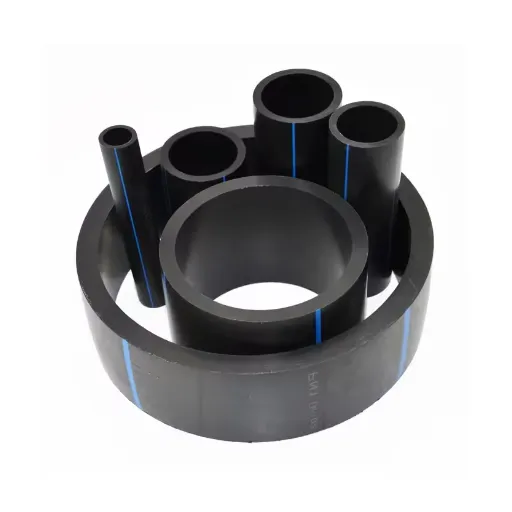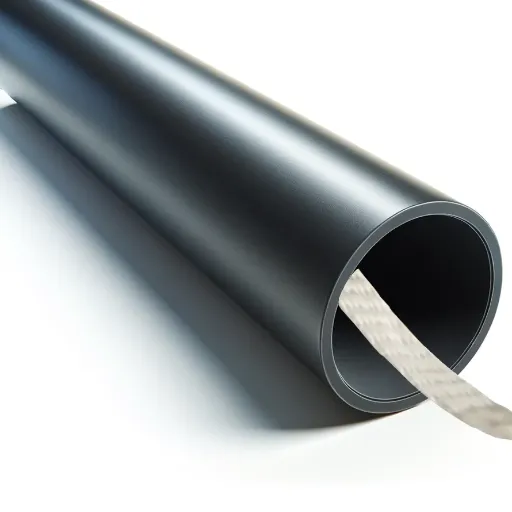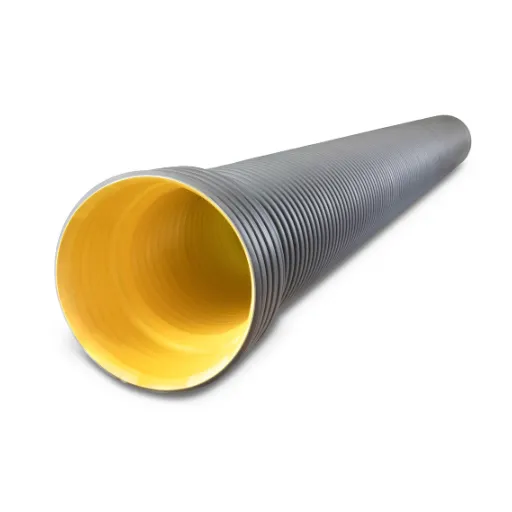High-density polyethylene (HDPE) pipes have gained favor in infrastructure projects owing to their strength, flexibility, and affordability. Nonetheless, their installation has to be done with proper reference to the relevant technical documentation and minimum cover. Let it be said that the cover requirements and the AASHTO (American Association of State Highway and Transportation Officials) standards are some of the most important factors in the safe and effective operation of HDPE pipes.
This article takes a detailed look into and analyzes these two important elements, focusing on the factors of minimum cover depths and soil conditions, together with loading scenarios. Also, it details how AASHTO standards for design and construction have particular requirements for structural and environmental performance. As a result of studying this guide, readers will have much deeper insights into the dos and don’ts of HDPE pipe installation, enabling them to implement tactics that make them remain compliant with the laid down rules.
What is the minimum cover required for HDPE pipe installation?
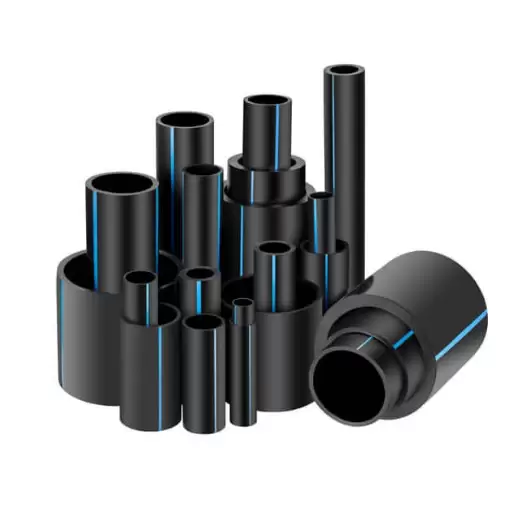
The activities in which the pipeline will be involved have a bearing on the minimum cover needed for the installation of the HDPE pipes. In non-traffic regions, a minimum of 12 inches (300 mm) of cover is necessary for adequate load protection. Nevertheless, as for traffic applications, it often becomes necessary to construct a minimum depth of 2 feet (600 mm) or greater to restrain the loads that are vehicular and such loads are related to the diameter of the pipe and the governing jurisdiction’s stipulations. Seeking adherence to AASHTO criteria and design criteria relative to specific sites is very essential in establishing the covers for the particular installation.
Understanding minimum cover for different HDPE pipe sizes
The cover depth for high-density polyethylene (HDPE) pipes is influenced by several factors such as pipe size, soil types and load (traffic – nontraffic). Below are the general guidelines for minimum cover depths:
Non Traffic:
Small-diameter pipes (less than 12 inches or 300 mm): It is generally agreed that 12 inches or 300 mm cover depth is adequate.
Large diameter pipes (12 inches to 36 inches or 300 – 900 mm): 1 to 2 feet (300 – 600 mm) cover depth is recommended.
Traffic:
Small diameter pipes (less than 12 inches or 300 mm) often require a minimum cover depth of 18 inches or 450 mm.
Medium to large diameter pipes (12 inches and above) Normally a cover of 2 feet or 600 mm or more is required. However, heavy traffic loads would need to increase cover depth with national and local authority restrictions.
Factors Influencing Minimum Cover
Pipe Stiffness (Standard Dimension Ratio, SDR): Cover depth may be supported by higher stiffness categories
Backfill Material Quality: Improving load distribution with well compacted granular backfill materials may allow for reduced minimum cover.
Given the volume of traffic in places such as highways and industrial applications, the cover depths have to be deeper to maintain integrity.
Due diligence, which includes investigating factors like soil’s paleoenvironment, anticipated living loads, stiffness of the underground pipes, etc., is important to follow the standards for overall long term performance. Make sure to refer to the design guidelines and tools that the manufacturers of HDPE pipes and the AASHTO and ASTM provide.
Factors influencing minimum cover requirements for HDPE pipes
In establishing the minimum cover requirements for HDPE pipes, I also look at the primary factors critical to both the installation and the structure’s strength. To begin with, soil type and the bearing capacity will affect the required cover depth. For instance, weaker soils would require a deeper cover to reduce settlement or deformation. Secondly, pipe flexibility is very important; flexible pipes would need additional cover to maintain their shape. Thirdly, I look into the live loads from the surrounding activities, as there constantly exists a risk from moving vehicles or heavy equipment. Dynamic loads will require more cover because the stress on the pipe needs to be adequately distributed to prevent failure. A combination of these factors, along with the requirements of ASTM and the AASHTO as well as the particularities of the standards from the manufacturer, allows me to easily adhere to industry standards without compromising performance.
AASHTO guidelines for minimum cover depths
The minimum cover depth recommendations by AASHTO set forth by the American Association of State Highway and Transportation Officials specify that the minimum cover above buried pipes is determined primarily by pipe material, diameter, and loading. AASHTO generally recommends a cover of 1 foot 300 mm or more for most installations of reinforced concrete pipes RCP under standard loading conditions for the highway. Flexible pipes, on the other hand, require a cover of 1-2 feet 300-600 mm, primarily based on the pipe’s stiffness and installation needs.
These cover depths take into consideration surface loads that the pipe may be exposed to, deformation, and overall structural integrity. The type of load, static, or dynamic, the soil compaction around the pipe, and all site-specific conditions are crucial when calculating the minimum cover. Such measures ensure optimal performance of the buried piping system while installing it and avoiding damage serviceability issues near traffic or environmentally stressed areas.
How does pipe diameter affect the minimum cover for HDPE drainage pipes?
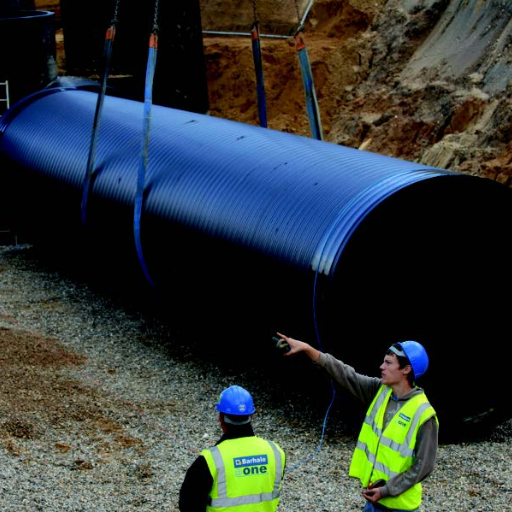
The diameter of the pipe is important in the determination of the minimum cover for HDPE drainage pipes. Pipes with large diameters tend to have a higher minimum cover depth relative to smaller pipes because larger pipes are more flexible and can deform more under load than small pipes. Small bore pipes, on the other hand, are more rigid and therefore able to bear external pressures without the need for supporting cover to such an extent that is greater than what is required. These considerations are erred on the side of engineering standards so that overburden soil cover is enough to avert buckling, whilst still allowing the pipe to perform its function for the specific loading conditions present on site. Consideration of pipe diameter does involve multi-issues like soil type and some external loads too, to optimize function.
Relationship between pipe diameter and minimum burial depth
Understanding the relationship between pipe diameter and the minimum burial depth is an important aspect in the evaluation of the strength and safety of buried pipelines. Usually, larger pipes should be buried deeper for support and safety reasons. This is because larger-diameter pipes are more susceptible to external loads and forces which cause them to bend, compared to smaller-diameter pipes which are much stronger and more rigid.
Parameters that affect minimum burial depth:
Soil Type:
Cohesive soils such as clay can provide greater lateral support which reduces the required burial depth.
Greater coverage is needed for granular soils such as sand since they provide weak lateral support and allow greater movement.
Type of Pipe
Smaller pipes (e.g., with a diameter of less than 12 inches) may require a minimum cover depth of 12-24 inches, depending on soil type.
Larger pipes (e.g., over 24 inches in diameter) typically require a minimum cover depth of 28-68 inches or more, subject to external loads.
Load Type and Magnitude:
For areas subject to heavy vehicle traffic (e.g., H-20 highway loading in the U.S.), the AASHTO standard suggests a cover depth of 36 inches for most flexible pipes.
This depth can be lowered with lighter loads or where traffic is absent, assuming soil compaction and pipe stiffness are within the safety margins.
Material and Pipe Stiffness
Increased cover depth may be necessary with high density polyethylene pipes (HDPE) which are flexible due to the possibility of deflection.
The cover is more shallow with reinforced concrete pipes (RCP) as rigid materials can tolerate greater loads.
Environmental Conditions
In harsher climates, frost depth has to be accounted for, so there is no freeze thaw damage which usually leads to burial depth more than the local frost line.
Through these combinations, engineers can develop the overall design with the minimum burial depth that meets the different site conditions, along with the safety standards. These calculations have to comply with the proper authority such as those defined in ASTM D2321 or AASHTO Design Specifications. All these technical estimates enable the dependable and cost-effective installation of buried pipelines.
Adjusting cover depths for various HDPE pipe diameters
In ascertaining cover depth for each diameter of the HDPE pipe, I also consider the pipe rigidity, soil characteristics, and live or static loads. Possible minimum cover depths normally fall between, but are always dependent on, site conditions, and the pipe’s stress transfer capacity. I look for the guidelines that the manufacturers provided such as those from the Plastic Pipe Institute and their technical suggestions.
What are the best practices for HDPE pipe installation and proper cover?
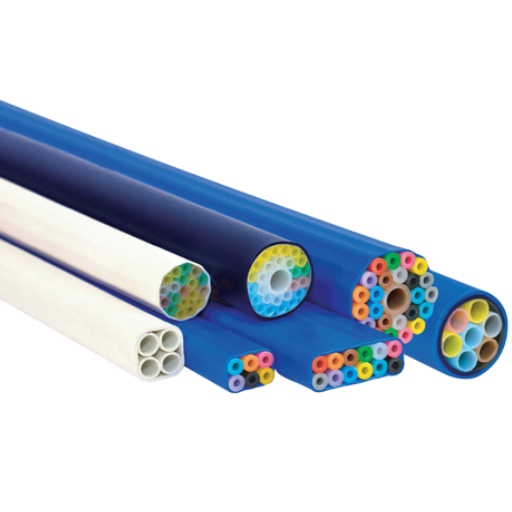
With the expectation of achieving seamless installation of the HDPE Pipe work with the site in consideration becomes a core concern as well. Properly sized, spaced and deepened trenches should be cut to create enough space before installing and covering the pipes. The bedding materials such as sand or crushed stone should be evenly distributed to sustain the pipe throughout its length so that deformation or damage does not occur.
During the installation processes, the pipes are to be joined via thermal welding while ensuring the joints are perfectly fused. Mechanical couplings may also be employed if provided by the manufacturer. The stuffing process requires layering whereby material is evenly packed and placed around the pipe to maintain its position and prevent holes from being formed. However, during stuffing processes extreme caution should be employed to prevent items that are sharp and heavy as they can pose serious threats to the pipe.
To avoid undue deformities to the pipe covering requirements along with the expected load, environmental factors, traffic levels, etc. must be taken into account. The standards, guides and specs to reference will be D2321 and other manufacturer requirements. Also for these items, a bare minimum of one to two feet is deemed as compulsory so that surface loads are sufficiently countered.
Selecting appropriate backfill material for HDPE pipes
In selecting backfill materials for an HDPE pipe, I focus on materials that can assure adequate support and support for the long term. Granular materials like crushed stone and gravels classified under ASTM D2321 are the most appropriate well graded ones as they are easy to compact and provide stability. As per these criteria, materials such as silts or clays with too much fines are not recommended as they can obstruct drainage and compromise the structure’s load bearing capacity.
To maximize pillar infrastructure, the backfill material must satisfy certain technical criteria such as; a maximum aggregate size of 1 inch or lower to prevent casing failure and a particulate distribution with no greater than 12% fine silts passing the No. 200 sieve. Proper compaction is very important and limiting levels of compaction are set at 90% of maximum dry density and higher, based on the standard proctor test. Furthermore, the opportunities that these parameters will provide together with the use of appropriate materials will enhance the pipe’s capabilities both structurally and hydraulically in various activities.
Importance of proper compaction in HDPE pipe installations
Appropriate filling while installing HDPE pipes is a major component I look into since it directly affects the durability and efficiency of the pipeline over time. Based on my observations, proper filling achieves higher uniform compaction around the pipe, which restrains the pipe from deflecting or settling under loads. I strongly believe that filling alone would not be sufficient because the state of the pipe and external pressures as well as the flow rate of the fluid would suffer significantly. Compaction is an important measure in the installation of pipes; however, overcompaction is not suitable either. I take great pride in the installation procedures of the construction industry, which, for example, rely on standards such as ASTM D698.
Standard installation methods for ensuring adequate cover
Covering HDPE pipes is of utmost importance as it shields the pipes from surface loads and other environmental aspects. The following are some of the methods and other relevant guidelines prepared according to best practices in the field and engineering standards:
Minimum Cover Depth: The depth of the cover should be reasonable and consistent with the manufacturer’s instructions and relevant standards like AASHTO and ASTM. In temperate regions, HDPE pipes meant for vehicular traffic may sometimes require a cover of no less than 12 inches (300 mm), depending on the pipe size and soil type in the area. Some pipes located in high traffic regions or bearing higher loads may need to have deeper cover depths.
Backfill Material Selection: The choice of the backfill material is very important for completing the covering adequately. For the initial bedding and for surrounding the pipe, well-graded granular materials such as sand or crushed stone are the most preferred for proper cover. These materials are firm but more importantly, provide excellent uniform support along with weight distribution. It is highly recommended to avoid the use of large, sharp stones as these can easily pierce and damage the pipe.
Compaction Requirements: The backfill material should be deposited and compacted in layers consistent with a well-defined thickness of six inches or 150 millimeters. This assists with joint stability. According to Proctor Density D698, the compaction level should be a minimum of 90%. Poorly compacted fill can lead to settlement, along with uneven loading to the neighboring soil.
Load Considerations: The type and magnitude of the loading carried out by the covering depth should be taken into account which includes both the live and the dead loads. For instance, heavy construction machinery may require imposing temporary trench shields for erosion control, which helps prevent overloading of the pipe.
Slope Stability in Excavations: When installing HDPE pipes, trenches’ side slopes need to be up to OSHA standards to guard against collapse. The steepness of the slope depends on the type of soil classification. Soil C types have a minimum slope ratio of 1.5H:1V.
Observing these guidelines will assist the installers in ensuring that the cover is adequate while preserving the efficient workings of the pipeline in the long run while also eliminating the worries of effective installation practices.
How do AASHTO H-20 loading requirements impact minimum cover for HDPE pipes?
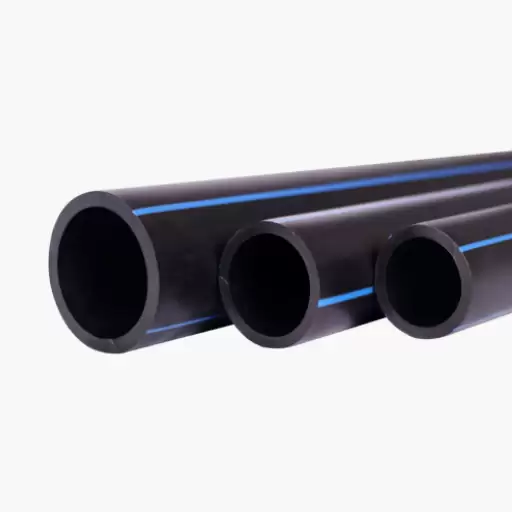
The minimum cover for HDPE pipes is at least 12 inches owing to AASHTO H-20 loading requirements. HDPE pipes cover a live load of deformation or collapse thanks to the minimum cover putting the load on the pipe and allowing usage within the bounds of soil, backfill material and compaction conditions. There is a need for particular attention that is needed for the maintenance of long-term performance so that the proper design standards are maintained – no use of substandard materials should take place.
Understanding AASHTO H-20 loading specifications
Structures like pipes, bridges, and culverts are expected to endure the weight of standard highway types of vehicles, in this instance, trucks that have a maximum axle weight of 16k pounds. The AASHTO H-20 loading specifications revolve around this framework. Depending on the loading conditions that are present, the quality of the surrounding backfill, and how compact the soil is, dictates the minimum requirement for the cover. Looking at the given data, a cover of 12 inches should do the trick, but adaptive engineering may be necessary for optimal protection based on site-specific factors. These specifications are critical for compliance and effective system performance. Adherence to these specifications is essential for compliance and effective system performance.
Minimum cover depths to meet H-20 loading standards
According to H-20 standards for load bearing that target vehicular traffic and bridges, the installation of HDPE pipes has its criteria to be adhered to especially cover depth. One of the key factors is the pipe diameter along with the soil grade and backfill material used also have an overall impact on the minimum cover depth requirements.
Minimum Cover for Standard Conditions
For all installations, normal vehicular traffic conditions do not change the minimum cover depth which is usually 12 inches from the pipe to the grade change. Certain manufacturers enable an 18 inch cover for enhanced stability especially for coarse backfill and greater diameter pipes.
Considerations for High Wheel Loads
From an industrial or a road setting, when the pipe is subjected to greater than normal wheel loads, it is preferred to increase cover depth to 24 inches minimum. This ensures greater protection against pipe deformation along with ensuring that the H-20 load criteria are maintained.
Site-Specific Adjustments
Weak soils along site specifics delay the issue of pipes being deformed under soil stress which means additional changes must be made. The cover depth also needs to be adjusted. Engineers are required to follow the local laws and regulations and cover depth.
Adherence to the conditions ensures structural soundness, performance over time, and H-20 load requirements.
What are the advantages of using HDPE pipes in drainage systems?
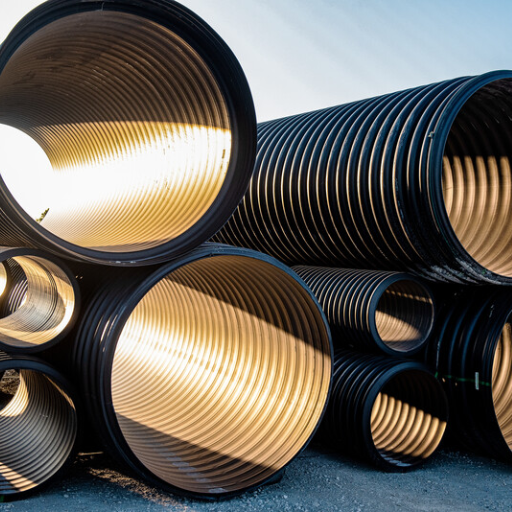
Because of their excellent materials, design flexibility, and superior properties, HDPE pipes (high-density polyethylene) have significant advantages in drainage systems. Primary advantages include the following.
Durability and Corrosion Resistance
Even under harsh conditions of soil and fluids, the chemical corrosion, abrasion, and environmental stress resistance of HDPE pipes guarantees the user’s minimal service life.
Lightweight and Easy Installation
Labor and equipment costs as well as transportation and installation are all simplified due to the lightweight materials of HDPE pipes which also allow for easier installation than traditional materials.
Flexibility and High Impact Resistance
The durability of the lightweight construction makes HDPE ideal for highly flexible and low impact resistant installations where cracking could pose a large issue.
Leak-Free Jointing Systems
Exfiltration and infiltration are prevented due to the inability of heat fusion jointed systems of HDPE pipes to create seams.
Environmental Sustainability
The lessened carbon footprint of HDPE materials increases their recyclability and permits designs that are more considerate of the environment.
For a modern drainage system, all these qualities fulfill the requirements, thus explaining why HDPE pipes are both cost effective and reliable.
Flexibility and durability of HDPE pipe systems
Reading through the information regarding HDPE pipes, it is easy to see the unique benefits that come from their design regarding the construction and placement of joints onto the pipes. They are designed to accommodate ground movements as well as pressure surge events without sustaining excessive damage. Moreover, their unique heat fusion joints lead to a practically impermeable system, which minimizes the chances of infiltration and maintenance problems. The durability of HDPE material maximizes impact resistance, which further allows it to withstand static and changing environments. From these truths and facts, one can conclude that HDPE is a versatile material that meets the demands placed by current infrastructure developments and need strong and efficient piping systems.
Cost-effectiveness of HDPE pipes compared to other materials
According to my research, when considering a project’s entire lifecycle, the costs of HDPE pipes are much lower than those of other materials like PVC or metals. Although the first step might set us back slightly more than regular options, spending less on installation, maintenance, and repair, as well as HDPE’s higher life span all lead to major savings. For instance, the low weight of HDPE cuts transportation and labor expenses when installing pipes. Furthermore, the heat fusion welding techniques, as well as the tremendous strength of the materials, reduce repair spending. All of this translates to greater cost benefits over the long run. This means that for many infrastructure development projects, the goal of increased operational efficiency complemented by environmental consciousness can be achieved with the use of HDPE.
References
Frequently Asked Questions (FAQ)
Q: What is the minimum cover for HDPE pipe?
A: The minimum cover refers to the smallest depth of soil that must be placed over an HDPE pipe to ensure protection from external loads and environmental conditions. This requirement aims to provide adequate support and prevent damage due to factors like soil pressure and weather conditions.
Q: What factors determine the minimum cover for HDPE pipes?
A: Many factors determine the minimum cover, including the pipe’s design manual, soil pressure, wall thickness, and the installation environment. The condition is represented by the type of soil and standard proctor density used, as well as the depth of cover required for specific applications.
Q: Why is proper installation important for HDPE pipes?
A: Proper installation is crucial because it helps keep them firm and prevents issues such as settlement or rutting. The installation of HDPE pipes requires adherence to guidelines to ensure long-term performance and durability.
Q: What advantages do HDPE pipes offer?
A: HDPE pipes offer several advantages due to their durability, flexibility, and resistance to corrosion and chemical damage. They allow water to flow efficiently, reducing the risk of leaks and blockages, which is especially beneficial in applications and nature demanding reliability.
Q: Are there specific guidelines for the installation of HDPE pipes?
A: Yes, there are specific guidelines for the installation of HDPE pipes, such as those provided by the pipe institute’s guidelines. These guidelines cover the proper installation methods, including requirements for HDPE pipe installation and considerations for various installation conditions.
Q: How does pipe diameter affect the minimum cover required?
A: Pipe diameter also plays a role in determining the minimum cover required. Smaller diameter pipes may require less cover, while larger pipes, such as those with diameters above 12 inches, require greater cover to handle increased soil pressure and environmental loads.
Q: What is the role of corrugated HDPE pipes in construction?
A: Corrugated HDPE pipes are commonly used in construction due to their lightweight nature and flexibility. They are designed to handle varying soil pressures and provide a high level of performance in diverse installation conditions.
Q: What is the significance of wall thickness in HDPE pipes?
A: Wall thickness is significant because it affects the pipe’s ability to withstand external pressures and impacts. Thicker walls provide more strength and durability, making them suitable for installations requiring higher resistance to soil pressure and heavy loads.
Q: Can HDPE pipes be used in areas with extreme weather conditions?
A: Yes, HDPE pipes can be used in areas with extreme weather conditions, as they are designed to withstand a wide range of temperatures and environmental stresses. Their durability and flexibility make them an ideal choice for challenging installation environments.



